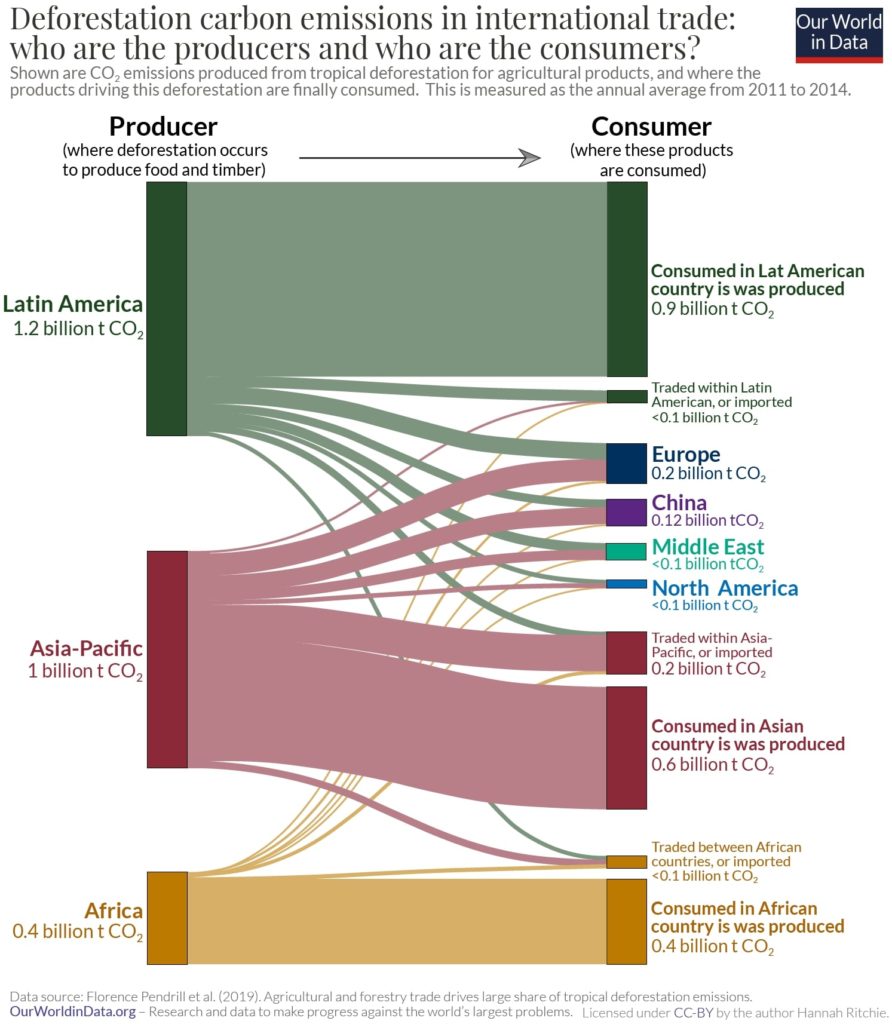Domestic or International, Which Market is killing the forest? It is well-known that commercial agriculture is one of the biggest contributing factors to deforestation in the tropics, especially in South America. A recent report has shown thought-provoking results, re-defining who is truly at fault.
—
Deforestation has been one of the most life-threatening environmental issues humans face. The world loses almost six million hectares of forest each year to deforestation; that is equivalent to half the size of Portugal. Worse yet, when the forest cut down is primary, old forest, it is pretty much lost for good as what grows back after will not be as effective as sequestering carbon or hosting the local ecosystems. Nearly 95% of those deforestation occurs in the tropics, which are mostly less developed countries with poor planning and regulations.
In regions such as Latin America and Southeast Asia, the main drivers behind deforestation are usually the production of crops such as palm oil and soy, or pasture clearing for beef production. Together, these commodities account for around 60% of tropical deforestation and 27% of global forest loss. The key is to understand that the country within which deforestation occurs is not the only generating the commodity demand that drives the whole process.
Results from a 2019 study published in the Global Environmental Change sheds some light on which market should the world put more attention into.

| Region | Domestic consumption | International Trade |
| Latin America | 77% | 23% |
| Asia-Pacific | 56% | 44% |
| Africa | 91% | 9% |
To everyone’s surprise, domestic markets account for 71% of tropical deforestation and only 29% of the productions are exported or traded. Reasons behind domestic markets being the major consumer are mostly because of development level and food culture: Brazilans tend to eat a lot of beef; Africans clear forests to produce more food.
Now that we know about where the issue really is, we tackle deforestation in areas with urgent needs. National-level interventions will be key: this can include improving policies on Brazil’s soy moratorium, implementing the REDD+ programme to compensate for the opportunity costs of preserving the forests, and aiding the advancements in agricultural activities in those tropical countries.
Thanks to all the effort from environmental activists and groups, more and more consumers in international trade are starting to pay attention to where the products are from and what they are made of; and be conscious about their carbon footprint.
This article was written by Wing Ki Leung.
You might also like: The History of Air Pollution in New York City










![The Statistics of Biodiversity Loss [2020 WWF Report]](https://u4d2z7k9.rocketcdn.me/wp-content/uploads/2020/12/lprwinkyTHB-544x306.jpg)





